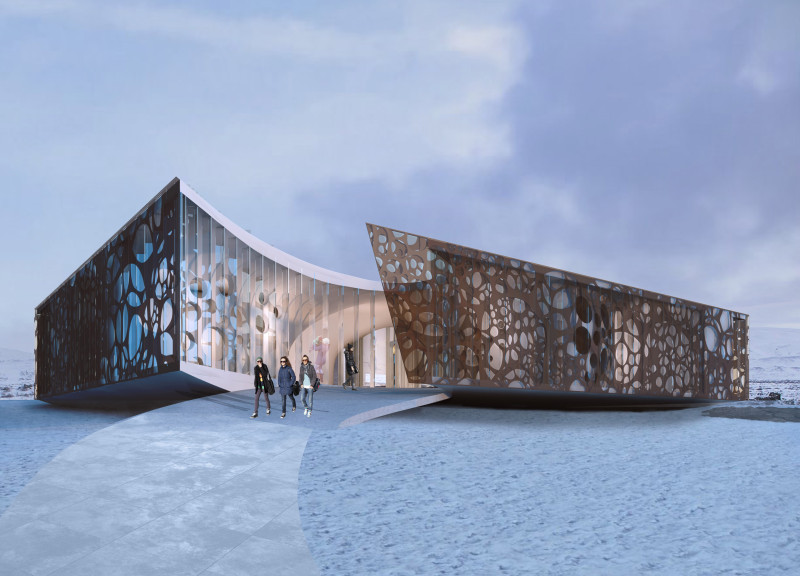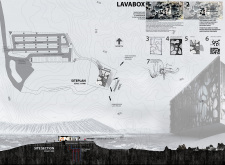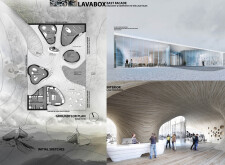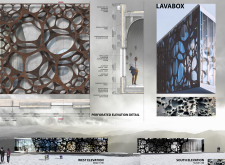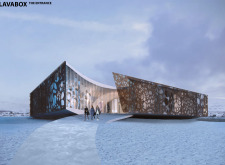5 key facts about this project
The Black Lava Visitor Centre is located in Dimmuborgir, a region within Lake Myvatn, Iceland. The centre functions as an educational space, allowing visitors to learn about the unique volcanic history and natural features of the area. The design concept draws inspiration from the surrounding landscape, incorporating elements that reflect the area's geological identity.
Architectural Concept
The design focuses on the relationship between open and enclosed spaces, mirroring the natural forms found in Dimmuborgir. The structure takes cues from the perforated black lava rock, which shapes the overall form and internal layout of the visitor centre. The architecture embodies the fluidity associated with volcanic activity, illustrating the process of lava solidifying into rock.
Functional Layout
The visitor centre includes various functional areas that enhance the experience for visitors. It features an office, discovery and exhibition room, store, main entrance, children's internal playroom, cafe kitchen, and an interactive display room. Each space is thoughtfully arranged to ensure smooth visitor flow and engagement, supporting educational experiences centered on geology and the natural environment.
Materials and Performance
Material choices play a significant role in the design, incorporating PPC-composite aluminum coping, sandwich precast panels, and a triple glazed aluminum curtain walling system. These materials contribute to the building's durability while connecting it to the surrounding landscape. The use of textured panels reflects the unique geological characteristics of the area, reinforcing the project's relationship with its environment.
Maximizing Views
The visitor centre is carefully situated to provide impressive views of the Dimmuborgir Lava Fields and Hverfjall Volcano. Clear glazing is used extensively throughout the design to create unobstructed sightlines and allow natural light to enter the spaces. This design choice enhances the connection between the interior and the dramatic landscape, enriching the visitor experience with a strong sense of place.
The building's form responds to the surrounding topography, mimicking the shifting patterns of the volcanic landscape. The design not only serves its practical purposes but also invites visitors to engage deeply with the natural environment around them.


